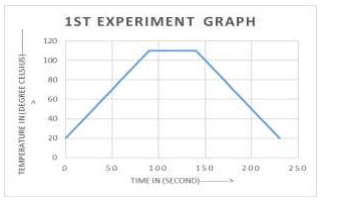Thermal Conversion of Waters Adhesive Force to Cohesive Force
Keywords:
water’s cohesive force, adhesive force of mercury, bond angle of water, meniscus of water and mercuryAbstract
The study of mine was conducted to know that how water’s adhesive force behave on subjecting it to different range of temperature. The primary research question that I had before starting this study was that how the physical property of water gets affected when a range of temperature is applied to it. Here in this study I have carried out three different experiments by subjecting water drops in a vessel which is heated at a varying range of temperature (between 20°C - 200°C) before coming to a conclusion. This research paper comprises of the physical property of water (adhesive force) which is seen to change when subjected at different range of temperature. Before conducting any research experiments I have read many research articles which have helped me in writing this research paper which I have mentioned below in my references section of this paper.
References
A. Azoulay, P. Garzon, M.J. Eisenberg, “Comparison of the mineral content of tap water and bottled waters,”. Journal of General Internal Medicine, Vol.16, Issue.3, pp. 168–175, 2001.
E. Dinelli, A. Lima, S. Albanese, M. Birke, D. Cicchella, L. Giaccio, P. Valera, B. De Vivo, “Comparative study between bottled mineral and tap water in Italy,” Journal of Geochemical Exploration, Vol.112, Issue.1, pp. 368–389, 2012.
Gugliotti, Marcos. "Tears of Wine." Journal of Chemical Education 81.1 (2004): 67-68. Web. 9 Mar. 2010.
Worley JL, Hamm RC, von Fraunhofer JA. Effects of cement on crown retention. The Journal of Prosthetic Dentistry. 1982; 48(3):289–291.
N. J. Shirtcliffe, G. Mchale, S. Atherton, and M. I. Newton, “An introduction to superhydrophobicity,” Advances in Colloid and Interface Science, vol. 161, no. 1-2, pp. 124–138, 2010.
N. Gao, F. Geyer, D. W. Pilat et al., “How drops start sliding over solid surfaces,” Nature Physics, vol. 14, no. 2, pp. 191–196, 2017.
N. J. Shirtcliffe, G. McHale, M. I. Newton, C. C. Perry, and P. Roach, “Superhydrophobic to superhydrophilic transitions of sol-gel films for temperature, alcohol or surfactant measurement,” Materials Chemistry and Physics, vol. 103, no. 1, pp. 112–117, 2007.

Downloads
Published
How to Cite
Issue
Section
License

This work is licensed under a Creative Commons Attribution 4.0 International License.
Authors contributing to this journal agree to publish their articles under the Creative Commons Attribution 4.0 International License, allowing third parties to share their work (copy, distribute, transmit) and to adapt it, under the condition that the authors are given credit and that in the event of reuse or distribution, the terms of this license are made clear.





